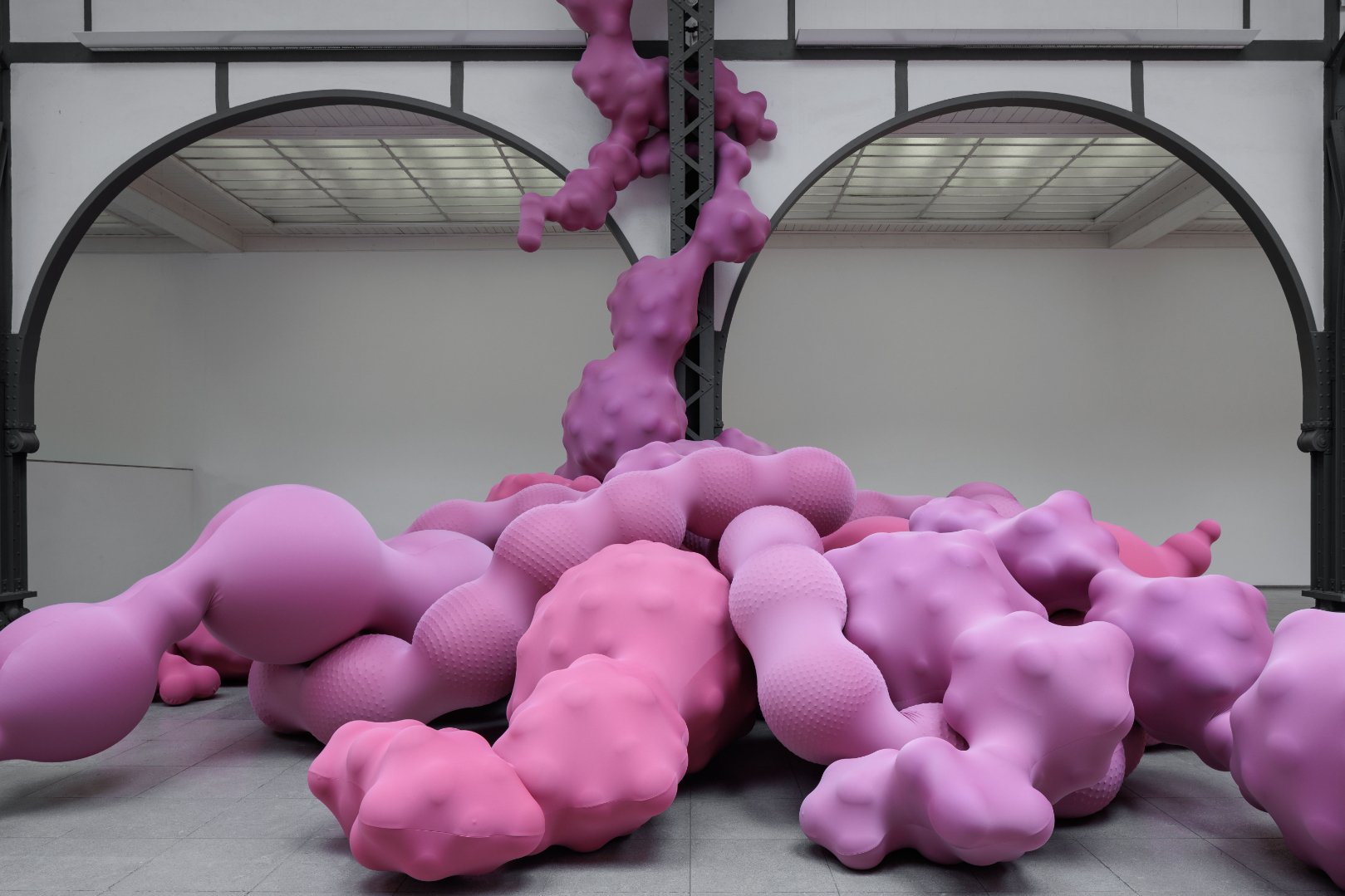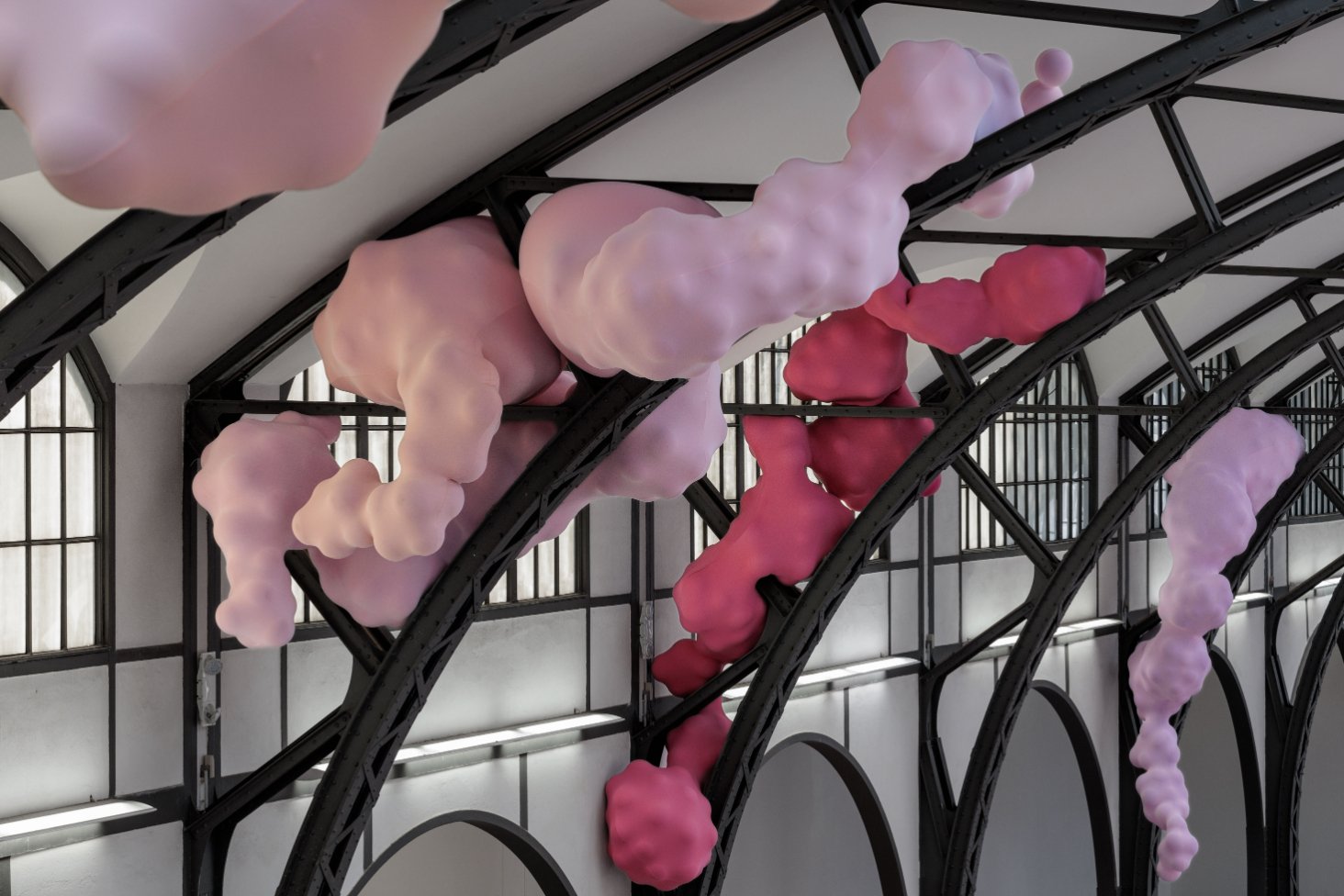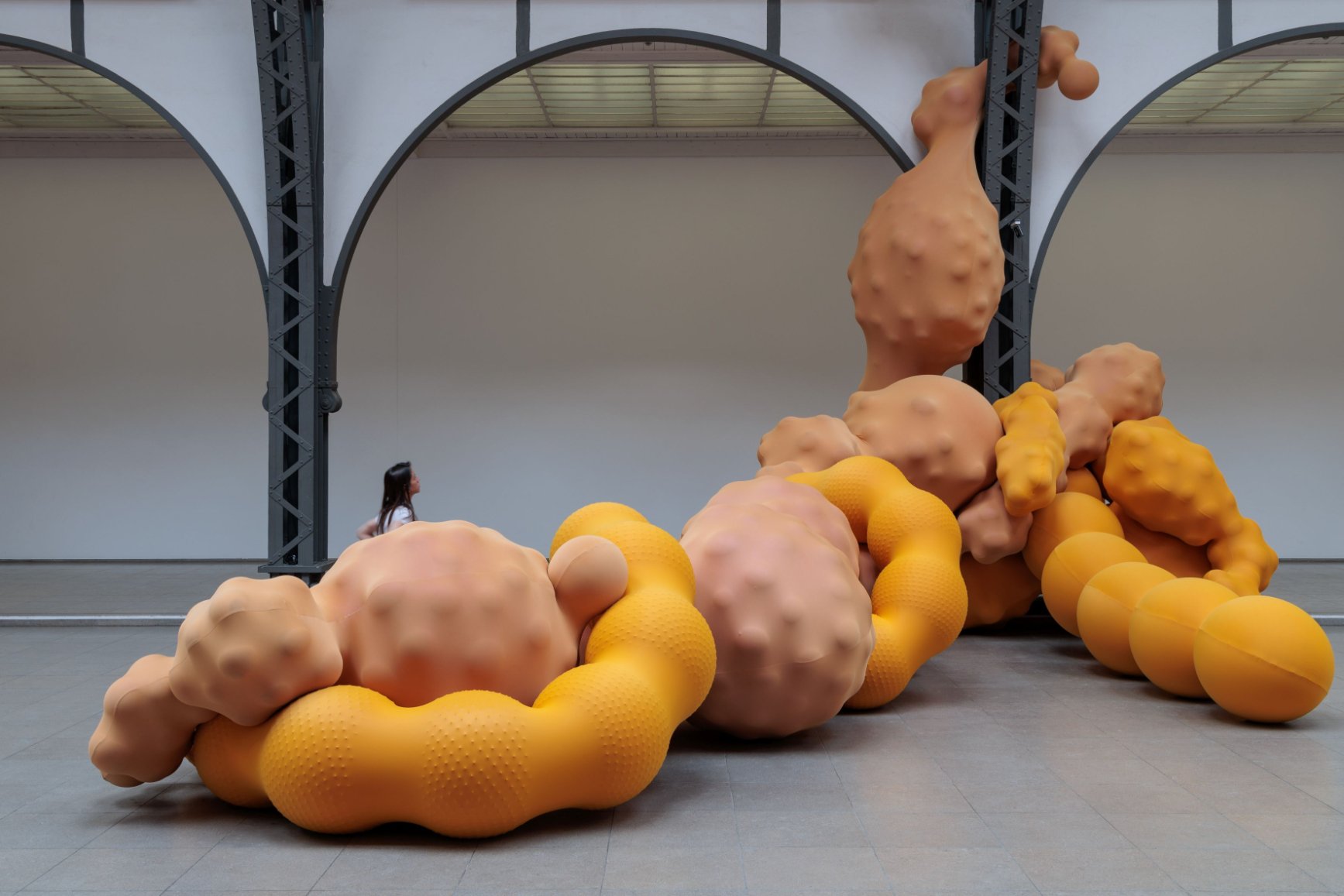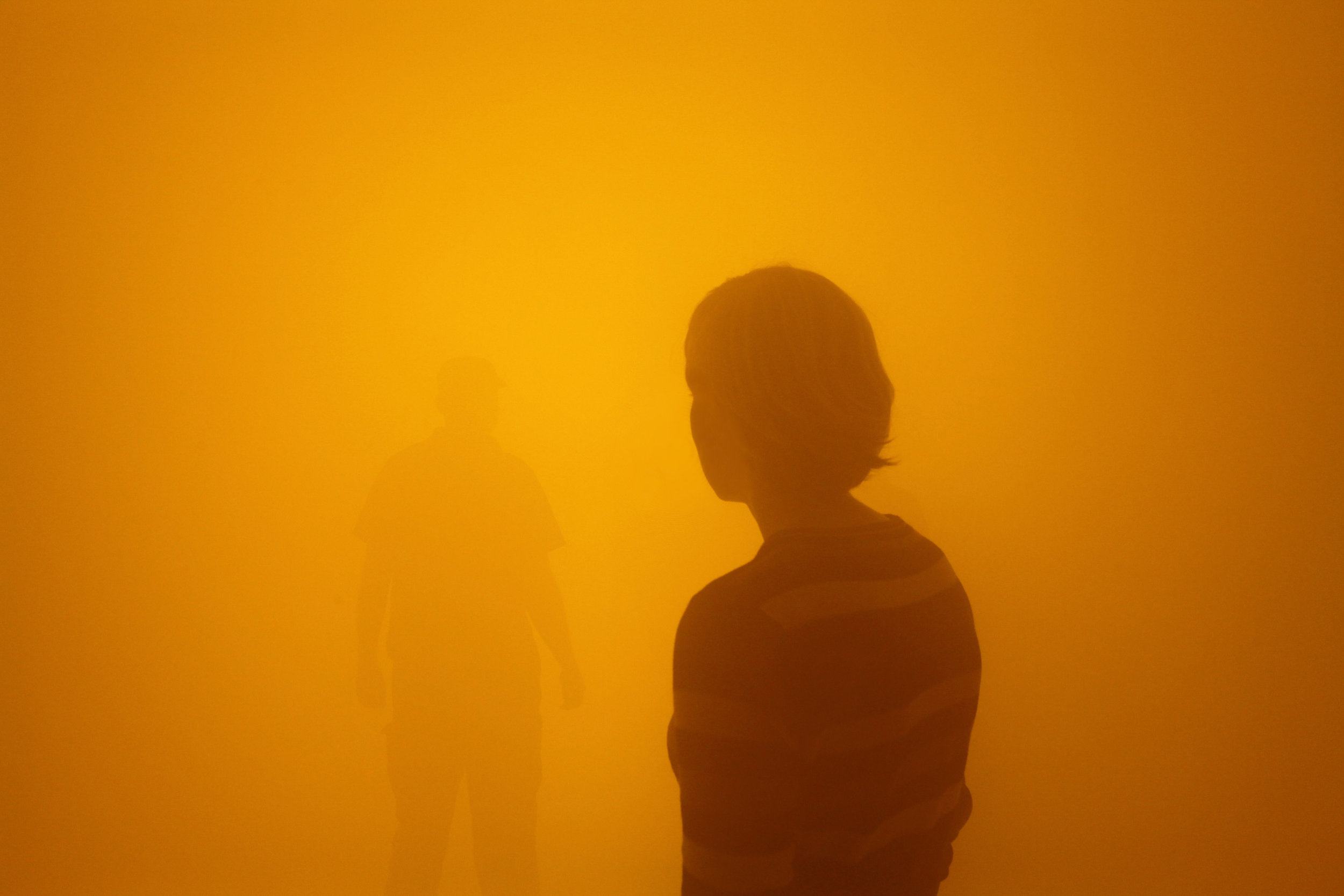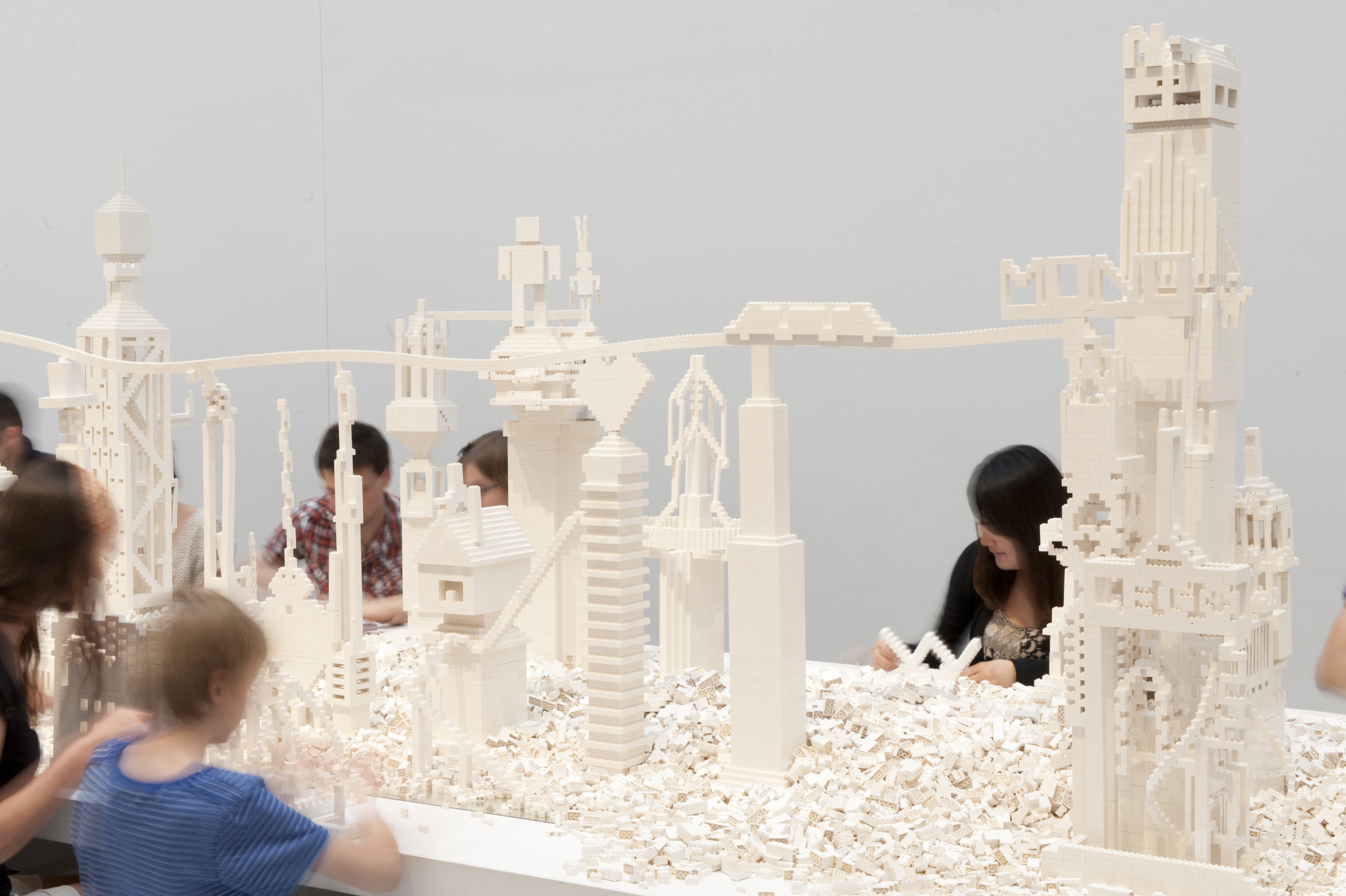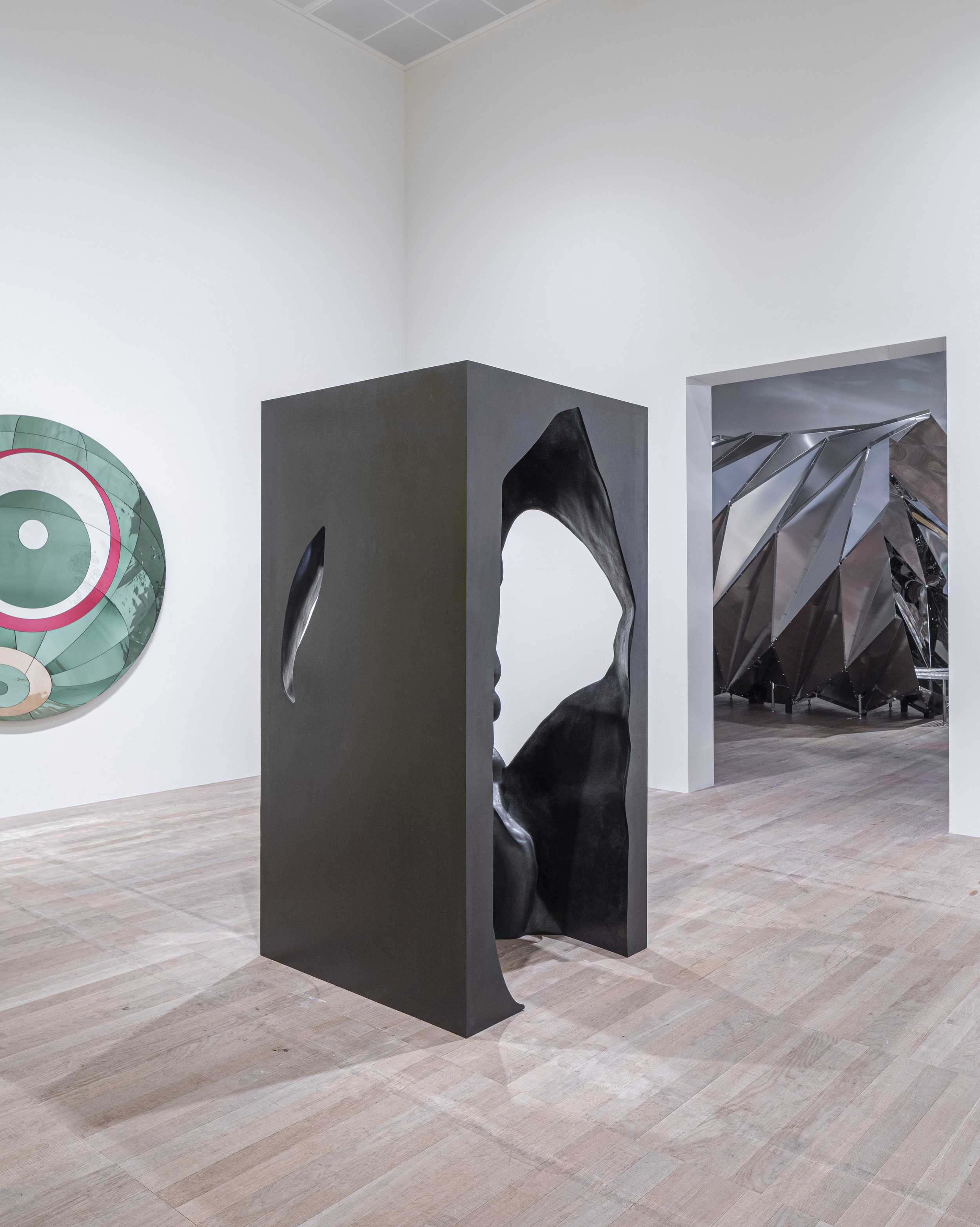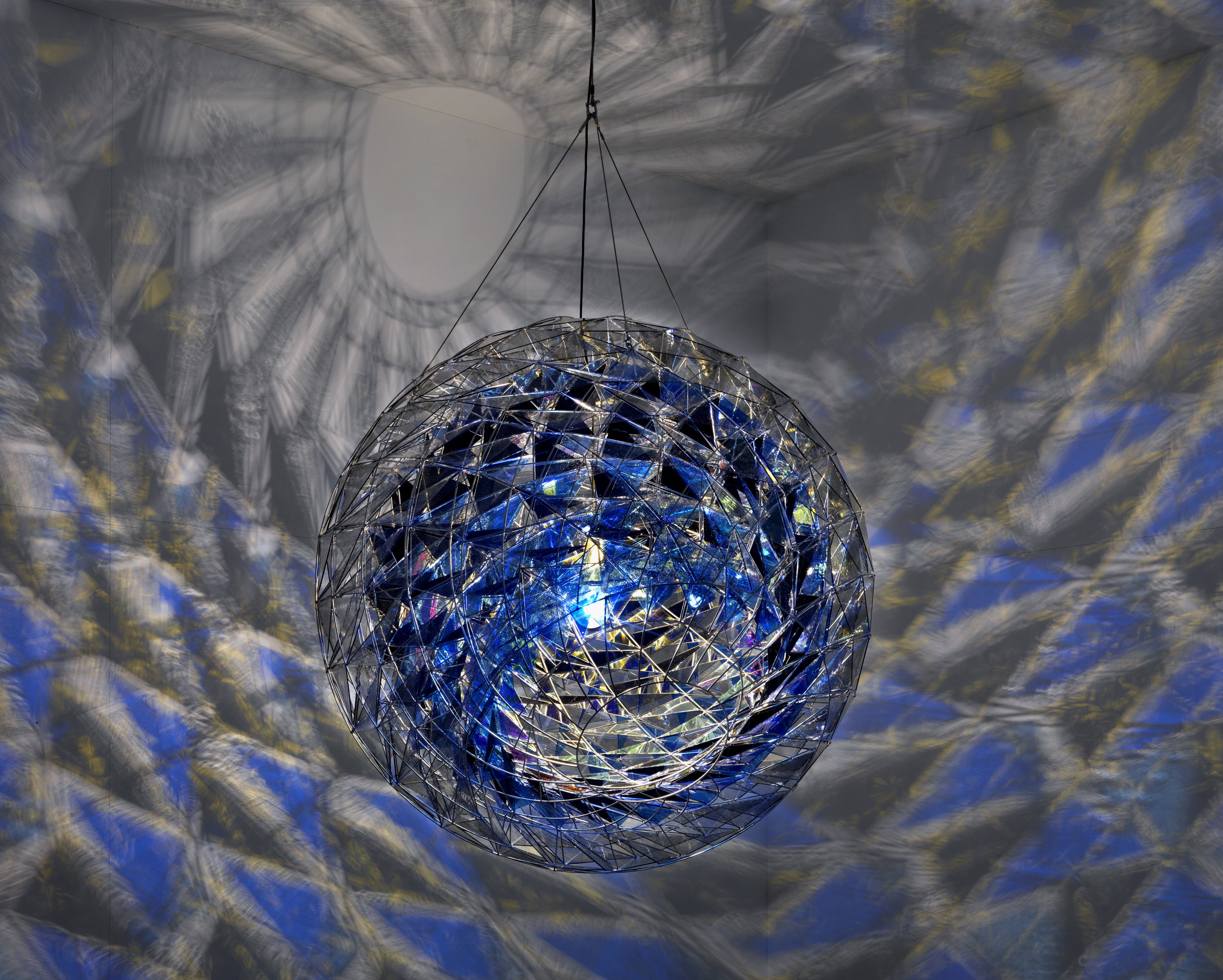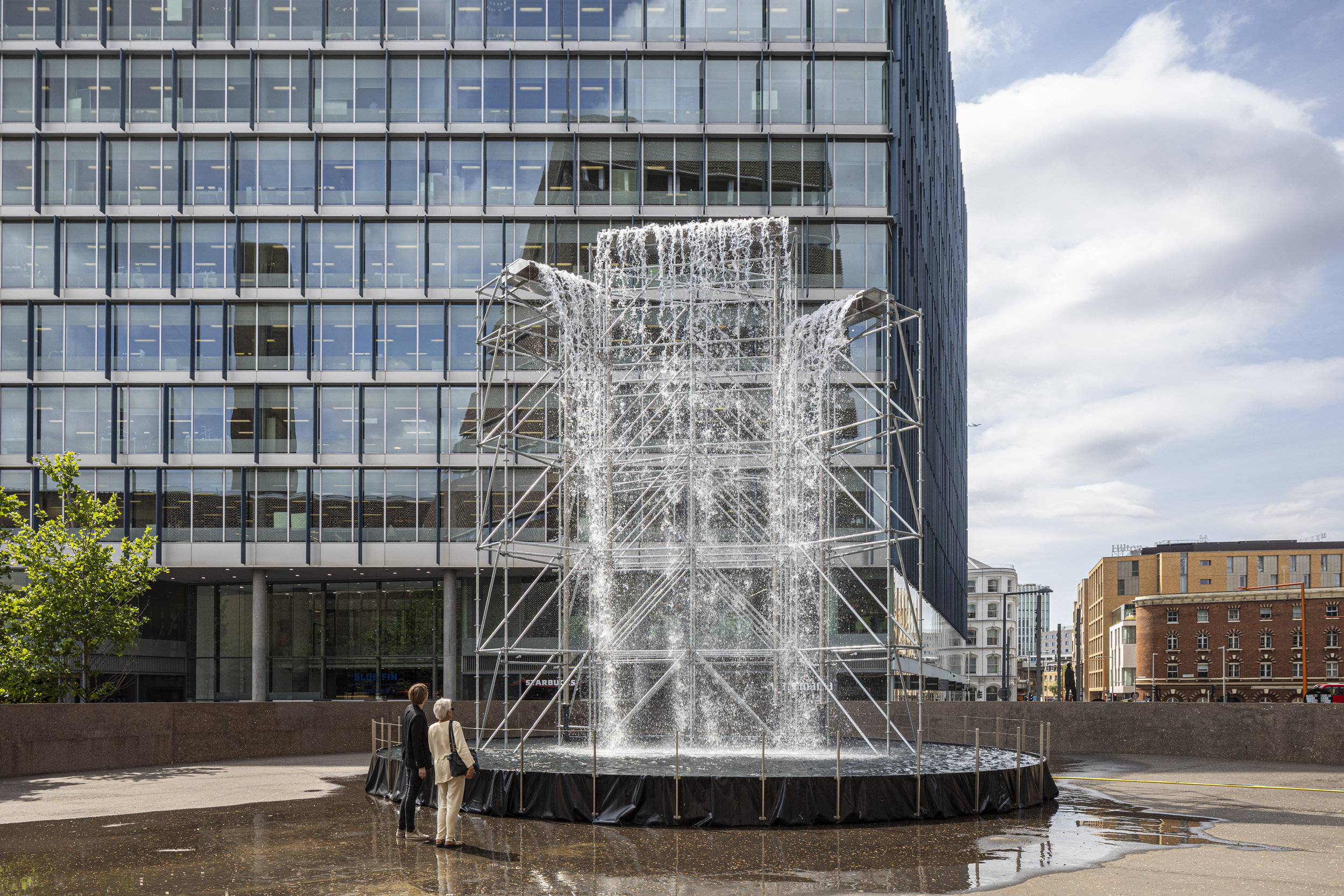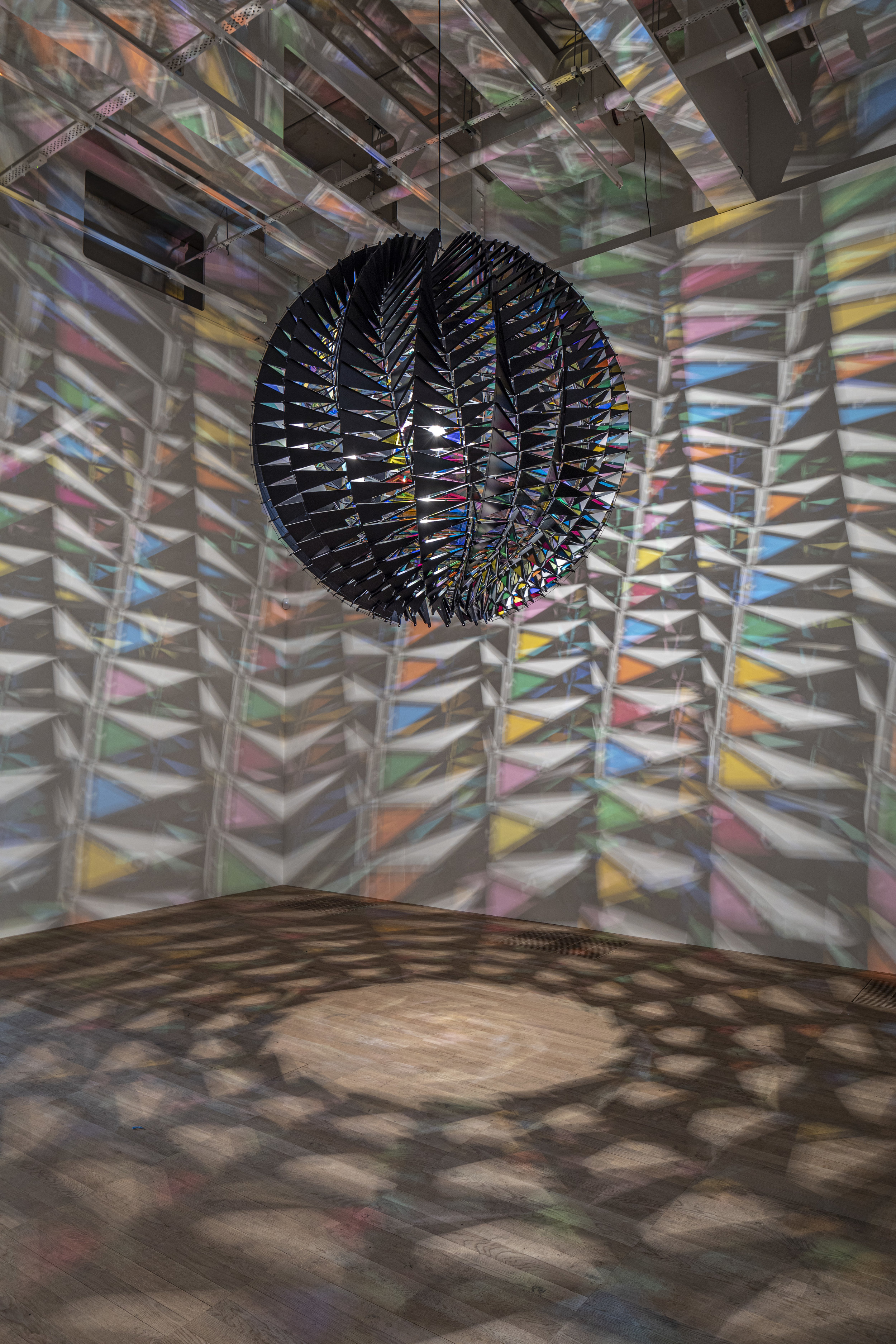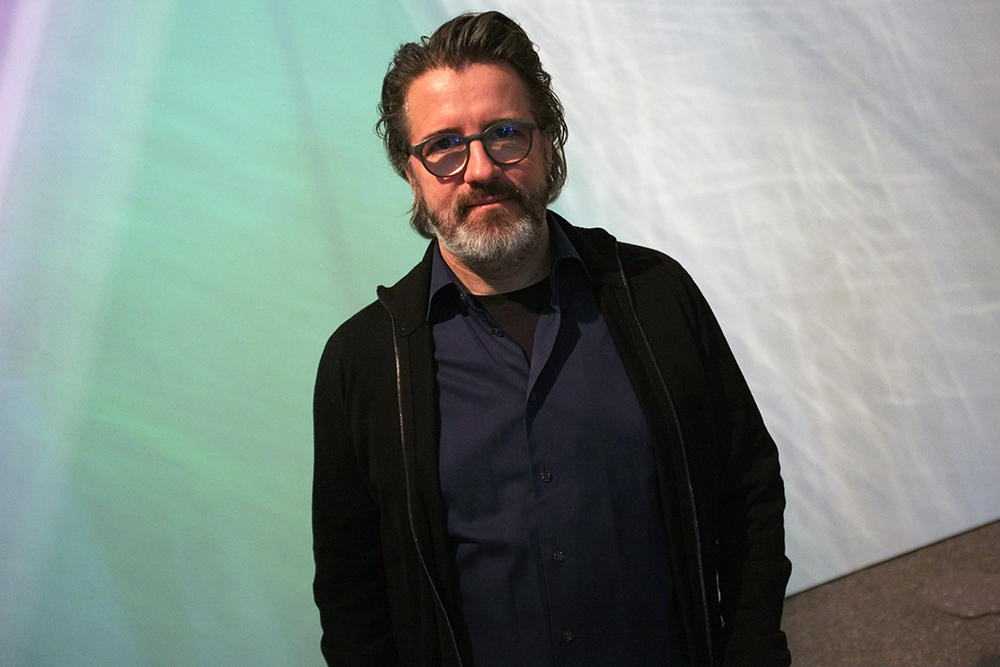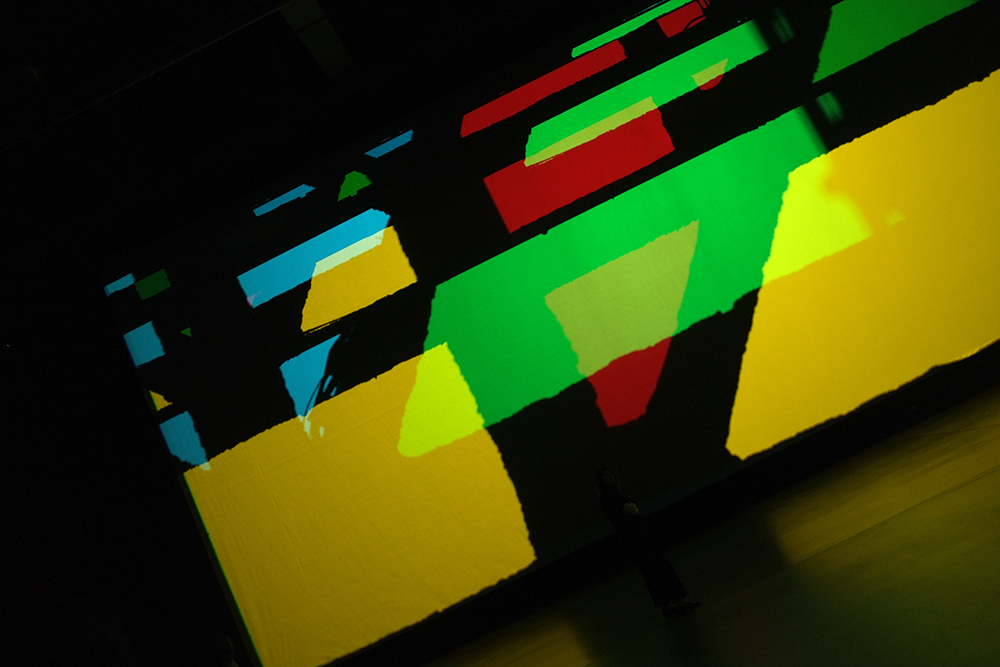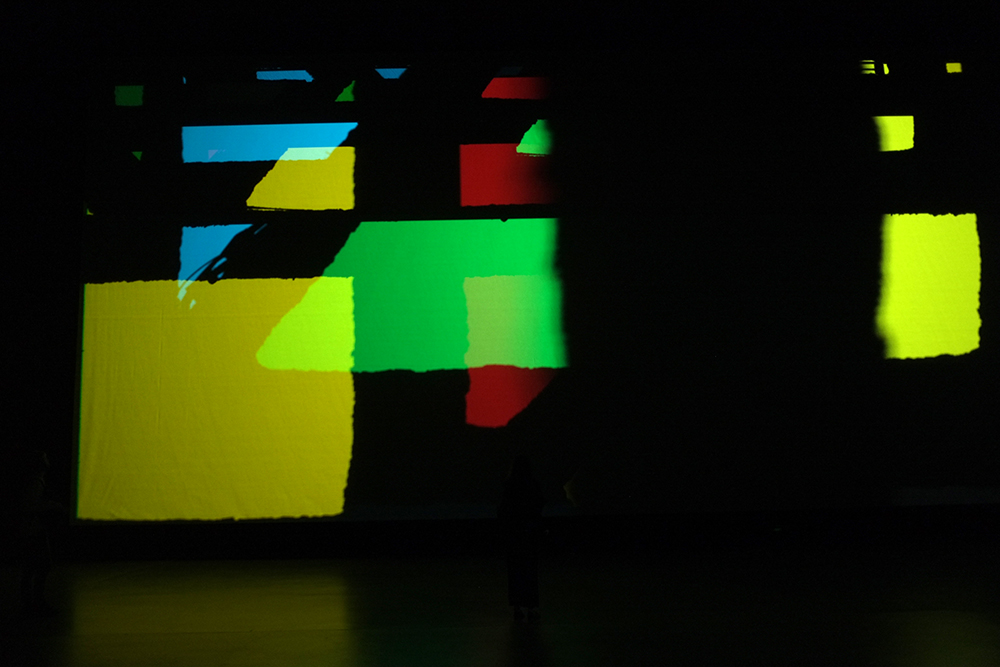Florentina Holzinger
Etúde for Church (2023)
Image credit: Mayra Wallraff
Berlin Atonal immerses audiences in constant states of change and fluctuating intensity, where seemingly static artworks defy any rigidity. In Florentina Holzinger’s Études, stunt effects meet the world of music to create scores for bodies as instruments. At Atonal, the artist presents Étude For Church, a performance in which a two-ton iron bell is asked to ‘call in the canonical hours, summon tempests and awake the sleeping soul’.
Bridget Polk
Reclaimed Damages (2023)
Image credit: Frankie Casillo
Bridget Polk will be present throughout the exhibition, reconfiguring Reclaimed Damages by assembling precarious sculptural forms over time, in dialogue with the audience and other works in the exhibition that manifest in ephemeral reflections on the past, present, and personal.
Mire Lee
Installation view
Image Credit: Frankie Casillo
Mire Lee has created a hanging fabric installation, where worn-out, torn, and ripped fabrics are dipped in viscous liquid clay. Over the course of its exhibition, the clay absorbed by the "skin" of the work will be slowly thinned down by water. It promises a misty viscerality as a space to question human fantasies of technologies that contradict the realities of subjects that decay and deform through time.
Cyprien Gaillard
Absorbent Figure (2023)
Image courtesy of artist
Cyprien Gaillard’s "Absorbent Figure" is based on an existing object found by the artist at the Kijk-Kubus-museum house in Rotterdam. While the meaning of the statue is widely debated, the design is similar to the ‘weeping Buddha,’ and one interpretation is that those who touch it will feel a mysterious alleviation of their sorrows. With its new industrial skin, the figure sits outside Kraftwerk amidst those gathering, taking part in the collective experiences of music and nightlife.
Atonal features visual art and concert nights intermittently through 9/17 at Köpenicker Str. 70, 10179 Berlin.





